- Print
- DarkLight
Curve Fit Analysis
- Print
- DarkLight
Overview
Curve Fit Analysis is a multivariate tool used to investigate the relationship between two parameters in exploratory processes. It uses linear least-squares regression and scatterplots, providing metrics like Pearson-R correlation coefficient and r-squared. It can be performed on Cycle and Part models, enabling high-granularity and lower-granularity comparisons. This data-driven decision ensures accurate predictions and efficient process optimization in manufacturing operations.
Before You Begin
Ensure you have:
- Access to the Application tab
- Permission to view selected assets or part types
- Two numeric parameters available (X and Y)
- At least 30 observations in the selected date range (100+ recommended)
Create a Curve Fit Analysis
1. Open Curve Fit Analysis
- Navigate to the Application tab.
- Select Curve Fit Analysis.
- The configuration panel opens.
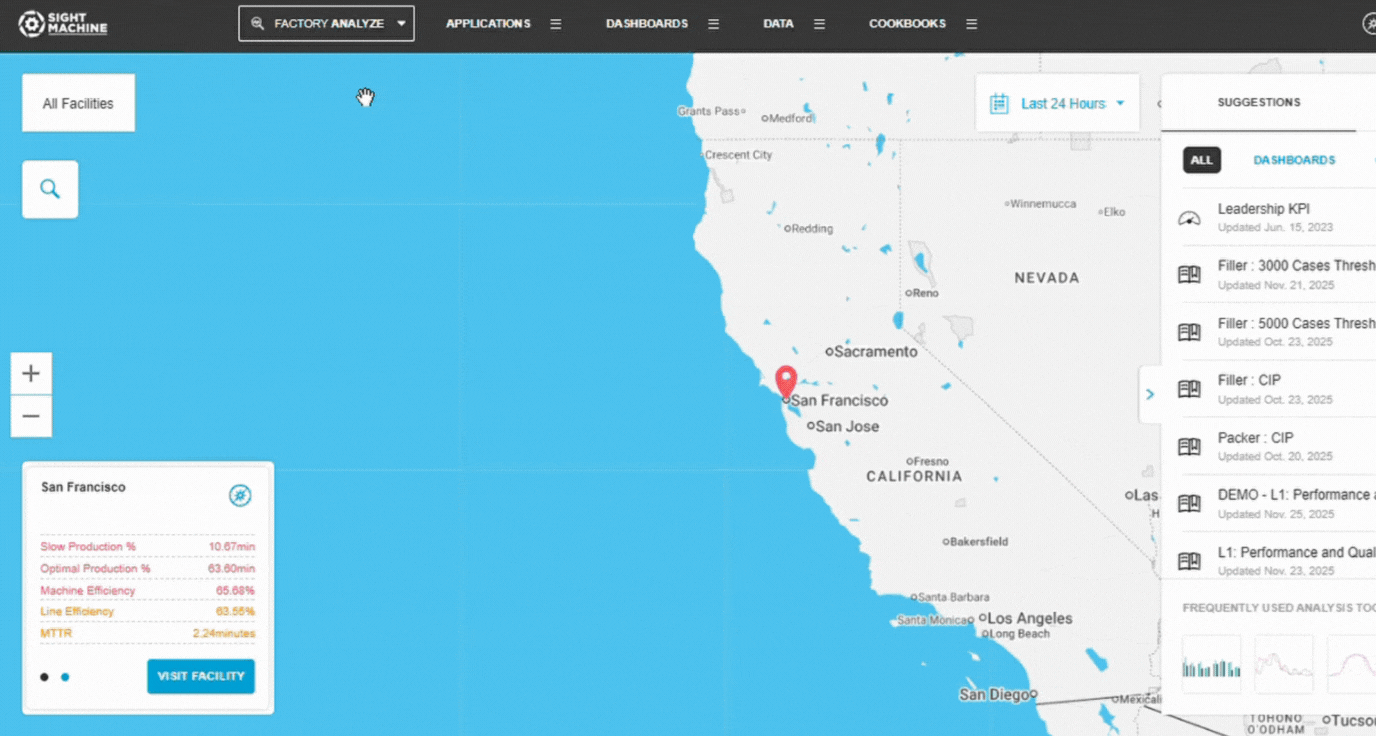
2. Select a Data Model
Select how you want the tool to group data:
- Cycles – cycle-level parameters from the same asset type
- Parts – part-level data across machines producing the same part type
💡 Tip: Use Cycles for equipment behavior and Parts for final product characteristics.
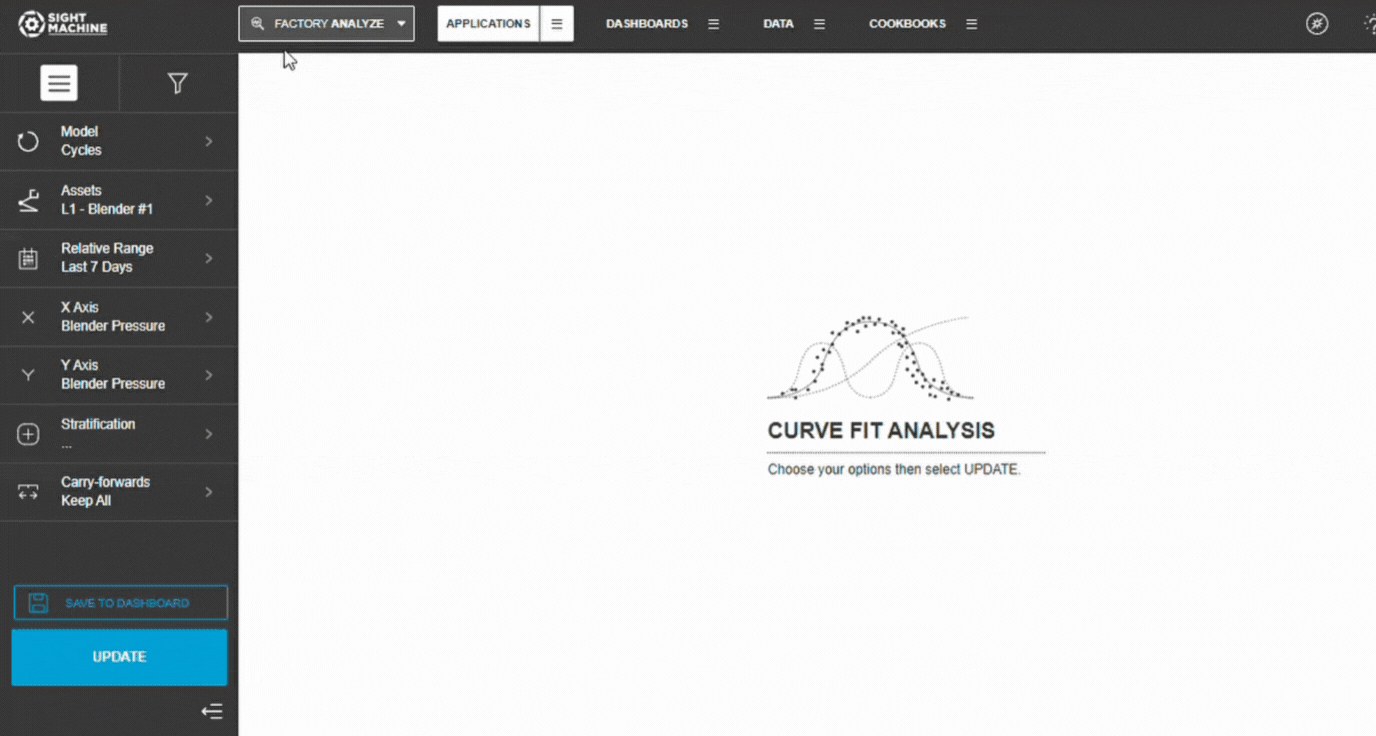
3. Select Assets
- Choose an Asset (Cycles) or Part Type (Parts).
- Select one or more assets of the same type.
- Confirm selections in the left panel.
📝 Note: Using multiple similar assets increases data volume and regression stability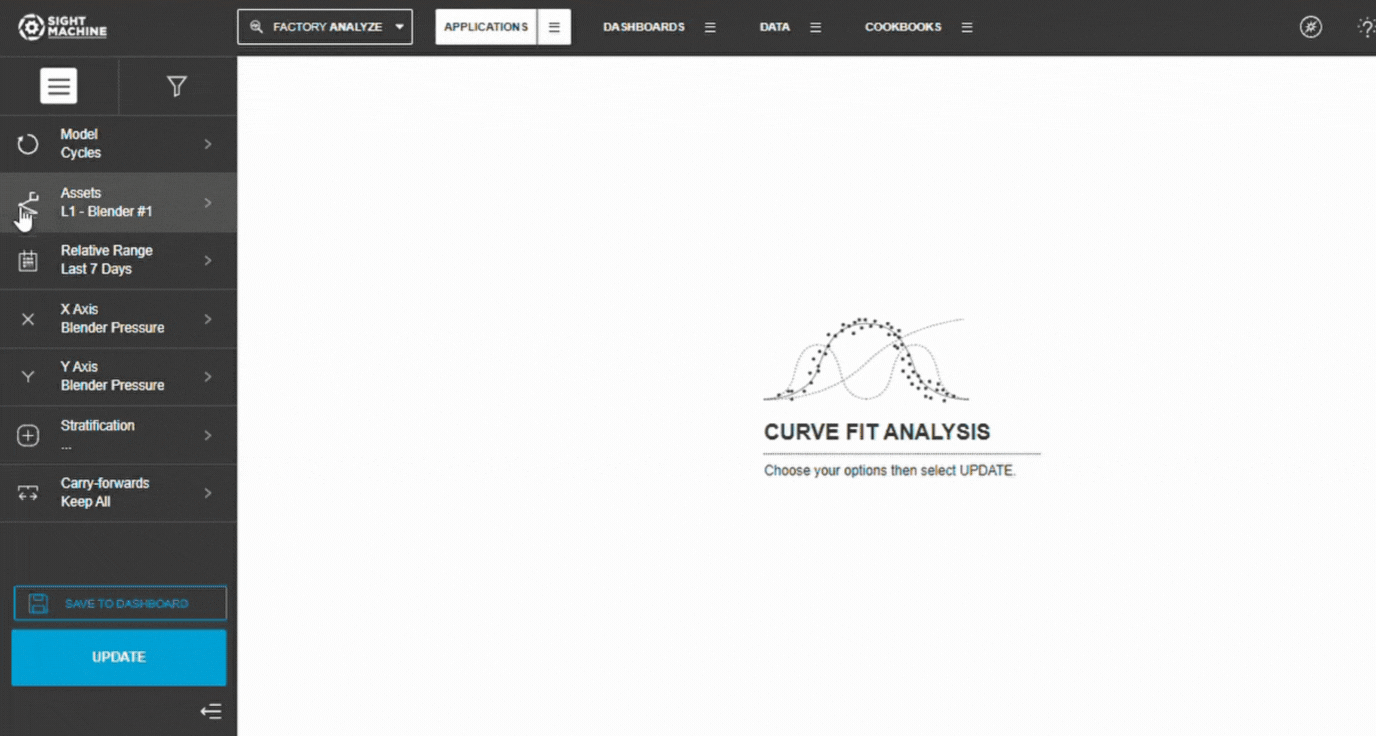
4. Set the Time Range
Choose:
- Relative ranges (Last 7/30/90 days)
- Absolute ranges (manual dates)
📝 Note: Larger ranges provide more data but may include process changes.
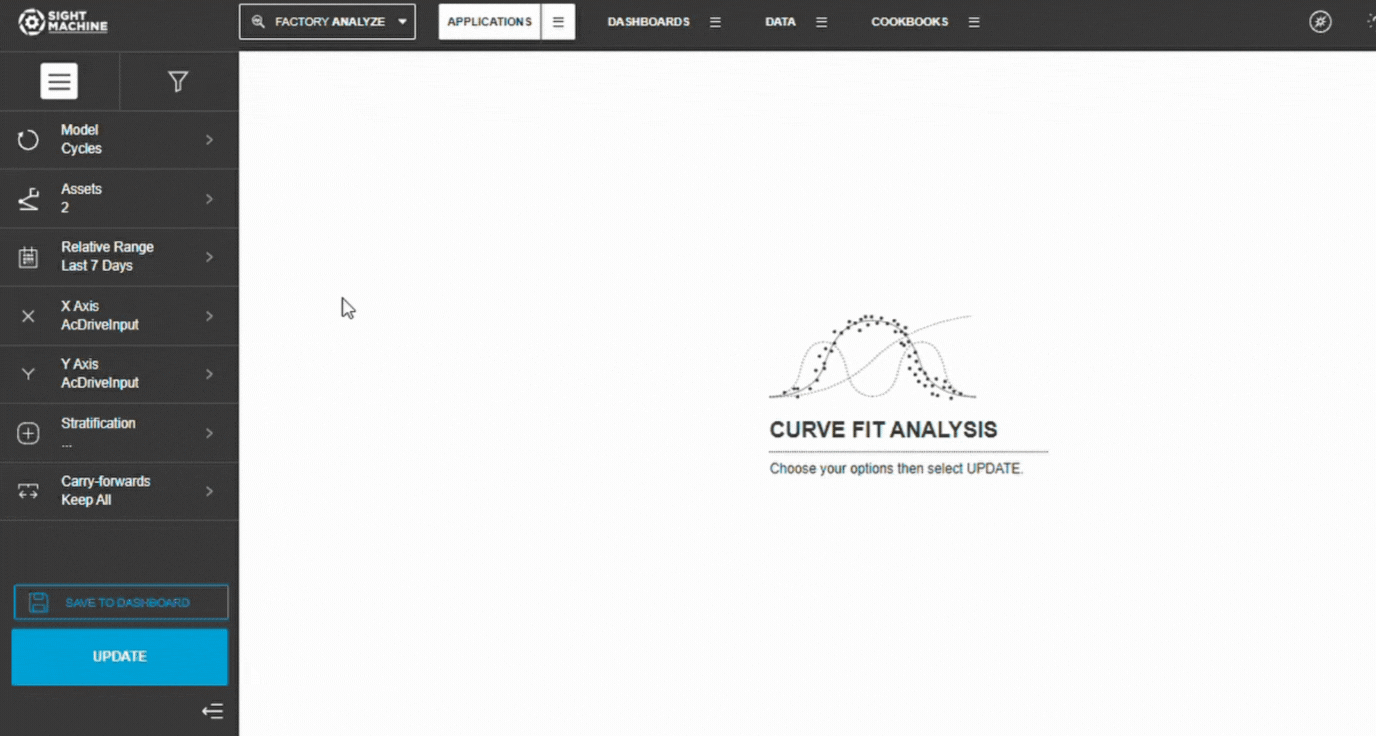
5. Select X and Y Parameters
- Choose the X-axis parameter (independent variable).
- Choose the Y-axis parameter (dependent variable).
Both must be numeric fields.
Example:
- X: Oven Temperature
- Y: Cure Time
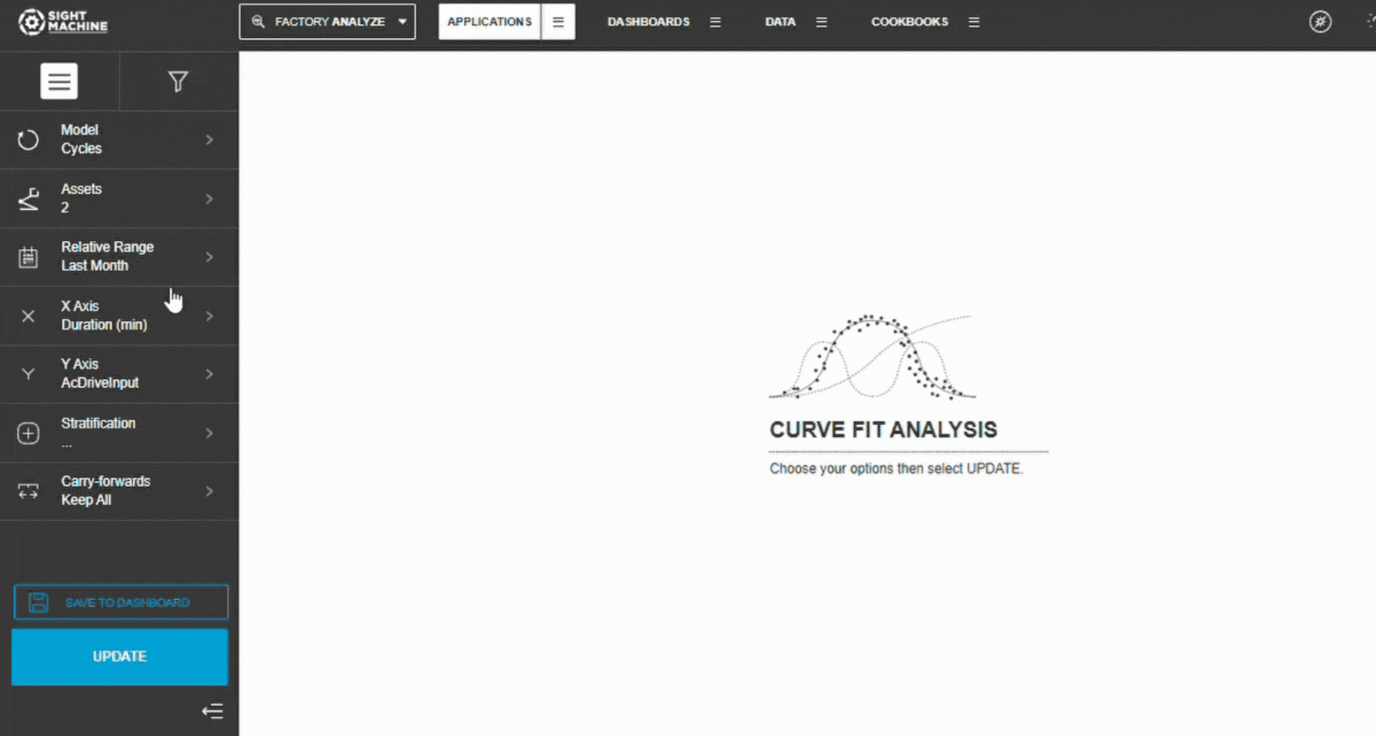
6. Add Stratification (Optional)
To compare different conditions:
- Select a categorical field (e.g., Shift, Product Type).
- Each category generates its own regression line.
- Leave blank for a single-line regression.
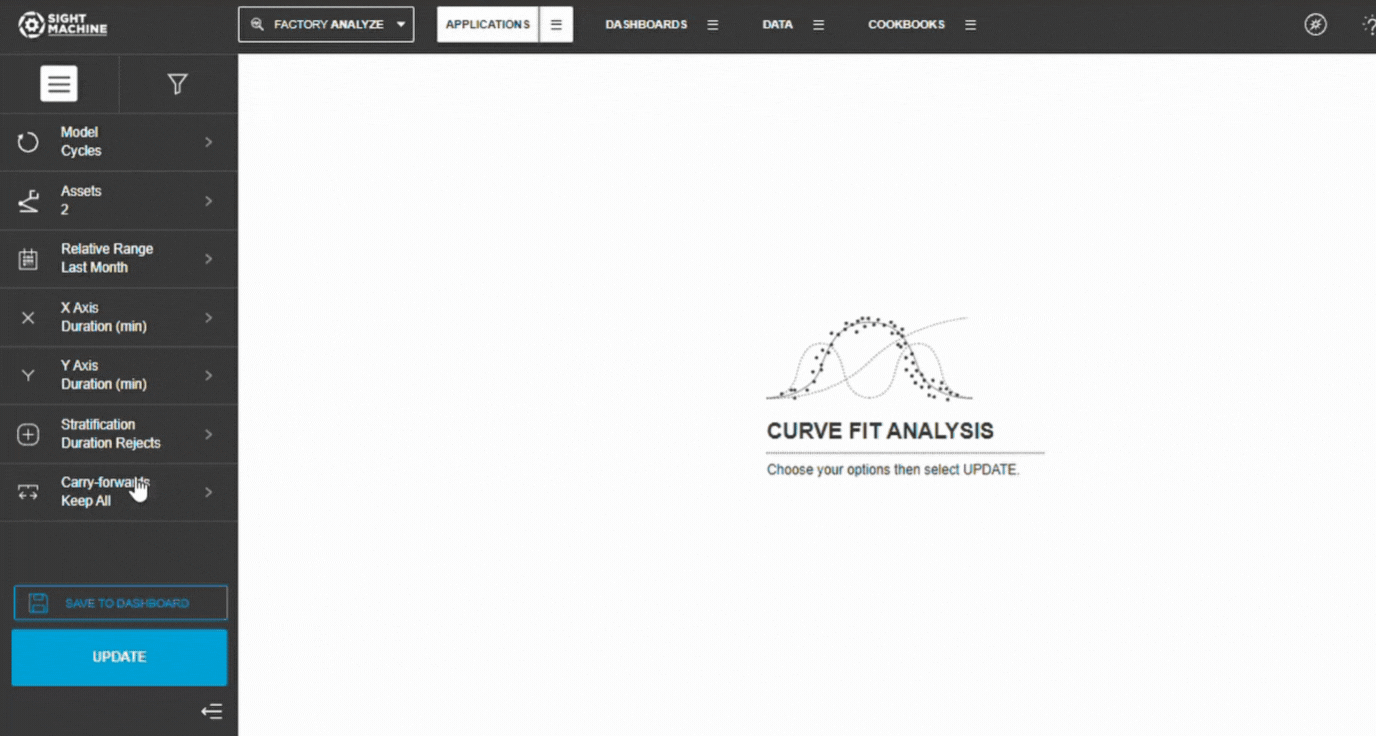
7. Configure Carry-Forwards
Choose how forward-filled values should be handled:
- Keep All (default)
- First
- Last
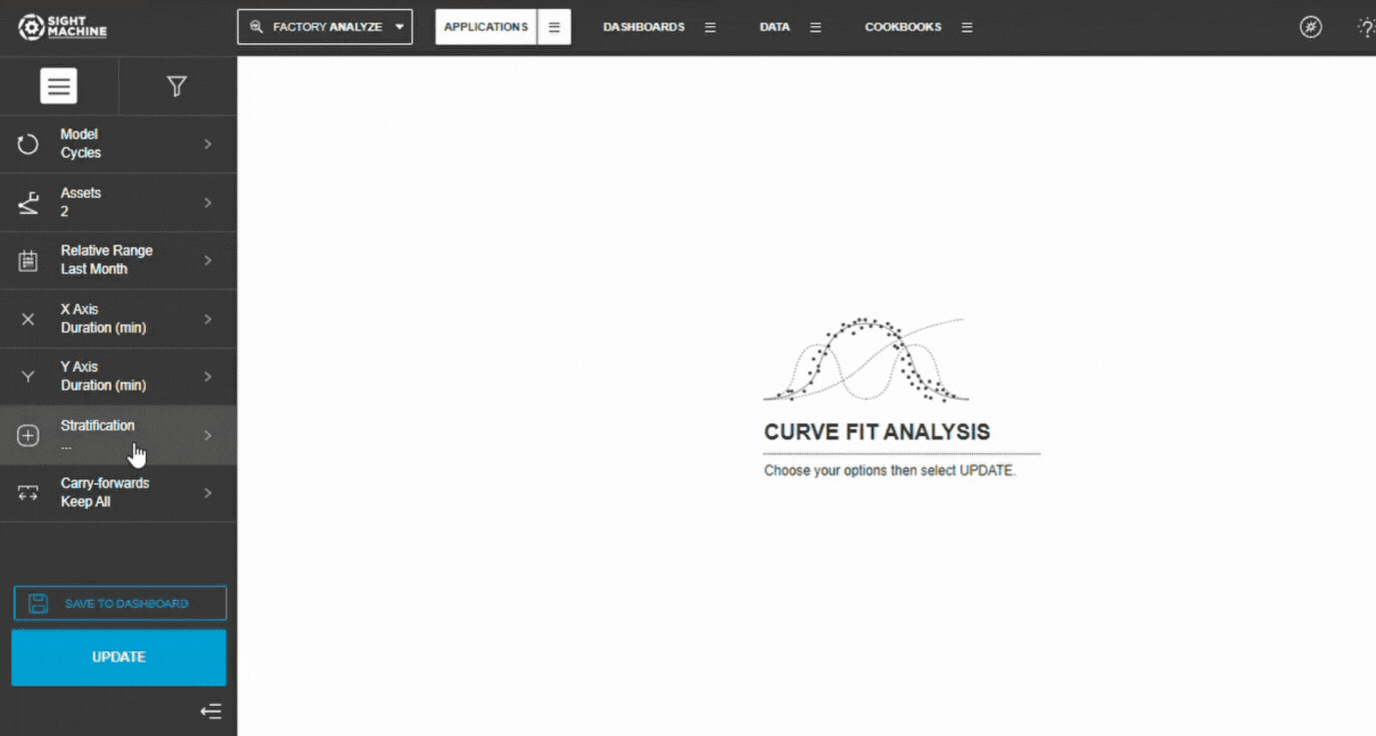
8. Generate Results
- Select Update.
- Wait for the scatter plot and regression line to load.
- Review statistical metrics and visuals
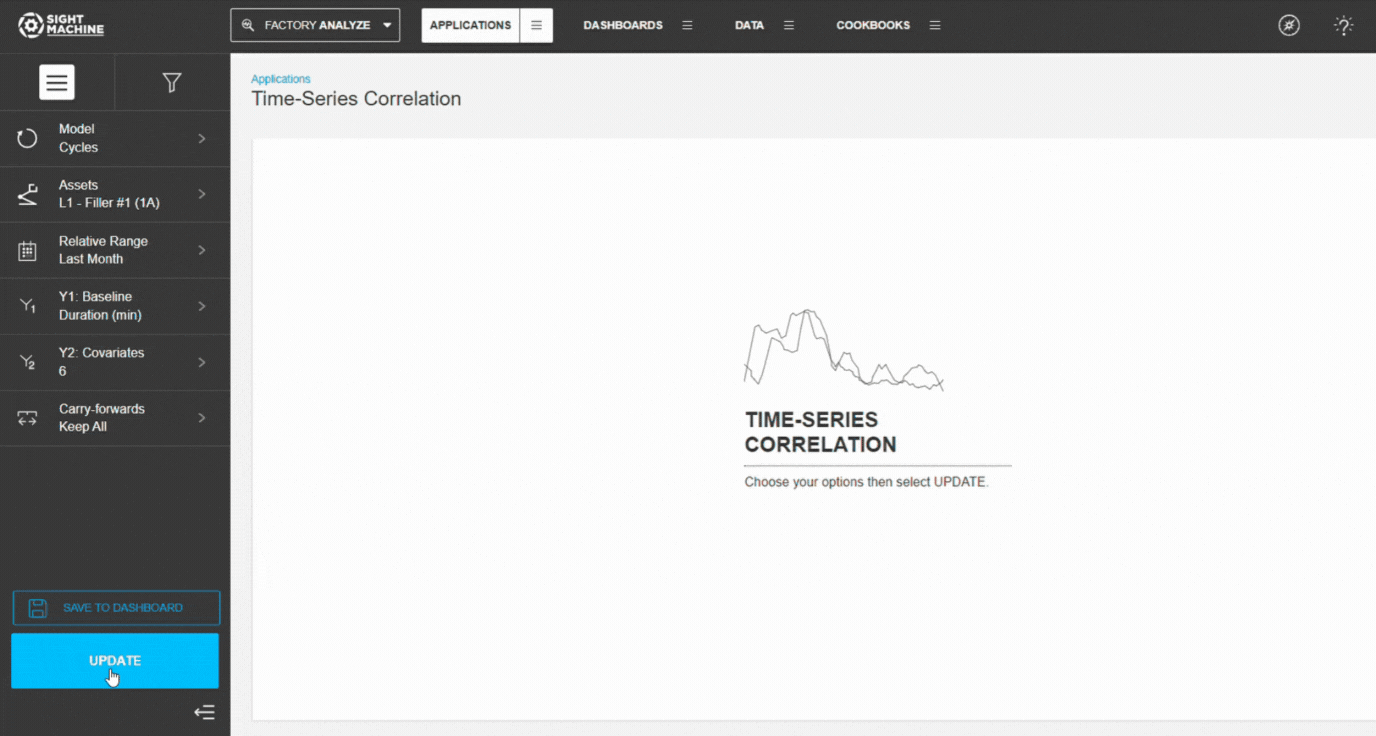
How Linear Regression Works
Least-Squares Method
Curve Fit Analysis uses linear least-squares regression, which fits the line that minimizes the squared distance between each data point and the regression line:
- y = mx + b
- m = slope
- b = intercept
Calculation Formulas
Slope (m):
m = (n × Σ(xy) - Σx × Σy) / (n × Σ(x²) - (Σx)²)
Intercept (b):
b = (Σy - m × Σx) / n
Statistical Metrics Provided
1. Pearson-R
Measures linear correlation strength.
Range: –1.0 to +1.0
- ≥ 0.7 strong
- 0.4–0.7 moderate
- < 0.4 weak
💡 Tip: Pearson-R only measures linear patterns.
2. R-squared (R²)
Explains how much of Y’s variance is predicted by X.
Range: 0.0–1.0
- ≥ 0.7 strong predictor
- 0.4–0.7 moderate
- < 0.4 weak
Formula: R² = r²
3. P-value
Indicates statistical significance.
p < 0.05 → significant
p < 0.01 → highly significant
p ≥ 0.05 → not significant
⚠️ Warning: Significance ≠ causation.
4. Standard Error
Measures how far points deviate from the regression line.
Lower values = better fit.
Data Requirements
Numeric Fields Only
- X and Y must be continuous numeric fields.
- Categorical fields can only be used for stratification.
Cycles vs. Parts
- Cycles → machine cycle data
- Parts → part-level comparisons
Date Ranges: Use relative or absolute windows.
💡 Tip: Be cautious of long ranges that include process or equipment changes.
Interpreting Results
Scatter Plot: Shows:
- Distribution of data points
- Regression line alignment
- Concentration or spread
- Outliers
Histograms: Display data distributions for X and Y:
- Identify skew
- Spot outliers
- Check data ranges
Common Use Cases
1. Predict Outcomes: Use regression equations to estimate results (e.g., predict Cycle Time from Temperature).
2. Identify Drivers: Understand how inputs relate to outputs.
3. Validate Expectations: Confirm whether expected relationships hold true.
4. Compare Conditions: Use stratification to test differences across shifts, operators, products, or machines.
Limitations & Considerations
Linearity Requirement: Relationships must be linear. Non-linear patterns require other methods.
Outliers: Large deviations can distort the regression line. Always inspect visually.
Causation: Regression describes correlation; it does not prove cause-and-effect.
Sample Size
- Minimum: 30 points
- Recommended: 100+
⚠️ Small datasets can produce misleading slopes or R².
Feature Benefits
- Detailed Relationship Validation: Allows for in-depth investigation of the relationship between two specific parameters, confirming whether a high correlation value is meaningful or just a data artifact.
- Linear Regression Computation: Computes and visualizes a linear least-squares regression between the two parameters, providing a precise, quantifiable fit line.
- Comprehensive Scatterplot Visualization: Provides a clear visual representation via a scatterplot, complete with histograms along each axis to simultaneously show the individual distributions of the two parameters.
- Stratification Capability: Allows users to select a categorical field for stratification, enabling the breakdown of data points into separate traces to analyze how the relationship differs across various categories (e.g., product type).
- Validation Metrics (R-squared & Pearson-R): Delivers a table of key regression metrics, including the Pearson-R correlation coefficient and the R-squared value (see note below). The R-squared value provides a simple estimate of how well the independent variable determines the dependent variable (closer to 1.0 indicates a stronger fit).
NOTE: Statisticians can speak volumes on the finer points of interpreting the r-squared value, but it is basically an estimate of how well the independent variable (the variable on the X axis of your chart) determines the dependent variable (the variable on the Y axis of your chart). Small numbers close to zero indicate a weak relationship. Bigger numbers close to one indicate a stronger relationship. - Strategic Exploratory Tool: Most helpful later in the exploratory process; serves as an excellent follow-up tool after identifying key pairs using the Correlation Heatmap or Time-Series Correlation.
- Model Flexibility (Cycle & Part): Supports multivariate analysis on Cycle and Part data models, enabling high-granularity analysis within a machine (Cycle model) or cross-machine comparison (Part model).
- Integrated Summary Statistics: Includes a table of summary statistics (Count, Standard Deviation, Min, Max) for both selected parameters, providing immediate contextual data for the analysis.
Summary
The Curve Fit tool outputs a scatterplot with a regression line and two histograms, one for each parameter. This enables you to gain a deeper understanding of the relationship between the two parameters.
For example, the stratification that you set applied a different color for the data points for each machine, allowing you to see if the machine impacted the relationship.
The value of correlation is represented by the Pearson-R correlation coefficient, and you can see other useful statistical metrics displayed, such as r-squared (see note below), p-value, and standard error.NOTE: Statisticians can speak volumes on the finer points of interpreting the r-squared value, but it is basically an estimate of how well the independent variable (the variable on the X axis of your chart) determines the dependent variable (the variable on the Y axis of your chart). Small numbers close to zero indicate a weak relationship. Bigger numbers close to one indicate a stronger relationship.

